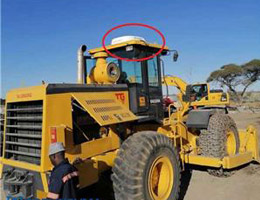Three common causes of broken AC in your semi-truck
The technology-driven nature of the transportation industry has compelled drivers to seek out more comfortable conditions as they drive long hours. Many trucks come equipped with AC units capable of extracting and distributing cool air, but these systems can be susceptible to damage from the rugged terrain and adverse weather conditions.

Common signs that your air conditioning is damaged :
● Blowing hot air
● Noticing low air pressure
● Smelling bad odors
● Observing leaks or stains
● Hearing strange noises
If you notice any of those issues, you’re more than likely experiencing a broken AC unit and need to fix the AC for your semi. Here are three common causes of broken AC and how to fix your AC for highway trips:
1. Leaking Refrigerant
The compressor cools the refrigerant and keeps air moving all the time, but a leak can occur due to punctures or holes in the hoses or tubes. Metal corrosion, poor installation and other factors can cause refrigerant levels to decrease over time.
2. Overworked Compressor
Air, water, dirt and oil cause system contamination. The compressor can only process gas, so trying to pump anything else will cause your air conditioner to work harder, potentially causing damage to the unit.
3. Blocked or Clogged Condenser
The condenser converts gases into liquids, which expels heat from your rig. Materials can build up over time, causing a layer of dirt and grime to form on the condenser’s coils. Your AC system will only blow hot air since the refrigerant fails to cool down.
Ways to Fix AC
If your AC stops working because of one of the problems outlined above, one of these four solutions may solve the problem.
1. Check for Leaks
Seeing fluid under your vehicle can indicate refrigerant leaks. Inspect your hoses regularly and tighten your hose fittings to prevent leaks. A professional can also try a dye test. They’ll add a small amount of dye to the refrigerant and circulate it through the unit, where it will leak out of the holes, as indicated by a leak detection flashlight. If they find a leak, a professional can replace the hoses or other damaged parts.
2. Recharge the System
Locate and open the low-pressure valve, then attach the refrigerant to the valve and charge from there. Ensure you use the right refrigerant type and amount, as specified by a manufacturer. It is possible to overcharge the AC, so consider seeking help from a mechanic.
3. Look for Debris Buildup
Check your air filters, evaporator coils and other places where debris gets trapped inside your air conditioning. Mold and mildew are other common issues in AC units because they cause contamination.
4. Schedule Preventative Maintenance
Keeping your vehicles in good condition ahead of time will allow you to maximize productivity.




